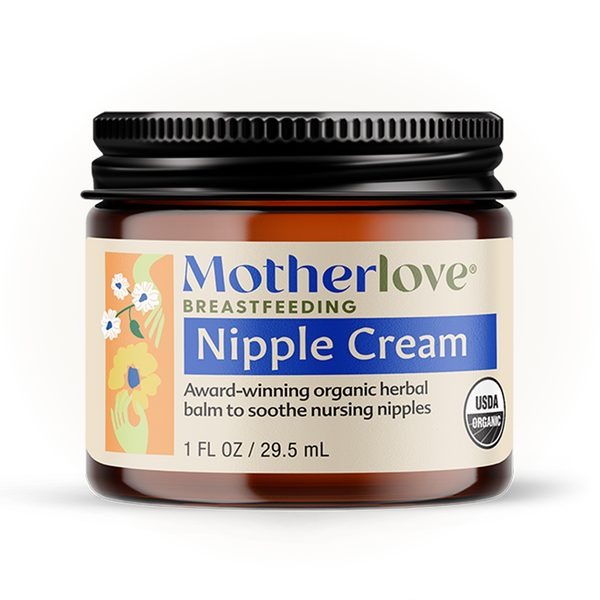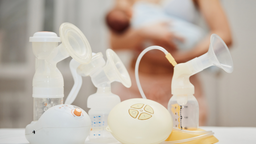Almost every breastfeeding parent has one: the breast that seems to be an overachiever, producing more milk than the other. Going along with that, of course, is the breast that seems to produce less milk—i.e., the slacker boob.
If you are the owner of a slacker boob, you probably have quite a few questions and concerns. You might be wondering why this is happening, if it’s a problem for your milk supply, and how it might affect your baby.
Not only that, but usually the slacker boob is a bit smaller than the one that produces more milk, making your breasts a little uneven. You might want to know if this asymmetry is going to go away once you are doing nursing, or if your boobs will be lopsided forever.
FIRST OF ALL, IT'S TOTALLY NORMAL
There aren’t any studies out there about how common it is for breastfeeding parents to have a slacker boob. But I will tell you that as a lactation consultant, it’s something I see all the time. I even had a slacker boob myself! So yes, it’s very normal, and it’s almost always nothing to worry about.
WHY IT HAPPENS
There are several reasons why one of your breasts might end up producing more milk than the other. Often, there is more than one cause. Let’s take a look, shall we?
NORMAL VARIATIONS IN BREAST ANATOMY
Sometimes the reason that one breast produces more milk than the other has to do with differences in breast anatomy. Breast milk is made in the glandular tissues of the breast, and each one of us has a slightly different amount of glandular tissue. Even one person could have more or less glandular tissue in each of their breasts. If one of your breasts has significantly more glandular tissue than the other, that breasts will naturally produce more milk than the other breast.
YOUR BABY PREFERS ONE SIDE
Breast milk is about supply and demand, so the more milk your baby takes out, the more milk your body will make. If your baby prefers to nurse from one of your breasts, they will suckle for more time, and that breast will produce more milk. Baby side preferences sometimes have to do with how your baby was positioned in the womb: they may prefer to nurse in the same position that they lay in while in utero. Additionally, some babies have a condition called torticollis which can make it uncomfortable for them to hold their heads in certain positions.
YOU PREFER TO HOLD YOUR BABY ON ONE SIDE
Without realizing it, you might have a side preference yourself. It may be that your neck and shoulders are more comfortable holding your baby on one breast over the other. Again, what ends up happening is that your baby nurses for a longer period on one side, causing the preferred side to produce more milk than the less preferred side.
HOW LONG DOES IT LAST?
Usually having one breast that produces less than the other will last as long as you are breastfeeding. However, if you continue breastfeeding for a long period of time, the lopsided look may be less noticeable, partly because your breasts won’t be quite as large as they are postpartum.
After you fully wean, your breasts will go back to their normal size. However, many people just simply have asymmetrical breasts. This is very normal and not a problem. In rare cases, asymmetrical breasts are linked to increased rates of breast cancer, but this is usually only if the asymmetry is significant. You should speak to your healthcare provider if you have any medical concerns about your breast shape and size.
WHAT TO DO ABOUT IT
As long as your baby is growing and thriving on your breast milk, there is nothing that needs to be done about a slacker boob. Breasts are pretty amazing and will produce whatever amount of milk your baby needs, even if one boob seems to do most of the work. In fact, some babies subsist on the milk from just one breast alone.
However, if you are feeling uncomfortable with your uneven milk supply or your lopsided boob look, there are a few things you can try. Basically, you’ll want to make sure that your baby is nursing more evenly on both sides. Or, if you are pumping, you’ll want to pump an even amount on both sides.
This might mean trying different positions if your baby seems to be fussy on one side. For example, you can see if lying down while breastfeeding is more comfortable for you or your baby. If your baby gets frustrated with the flow on the slacker boob, you can try massaging your breasts before nursing, and hand expressing a little milk to entice your baby to the breast. You can also try a technique called breast compression, where you gently squeeze your breast while your baby is nursing to get the milk flowing.
Whatever the case, if you have any lingering questions or concerns about slacker boobs or breast milk supply, consider connecting with a breastfeeding peer counselor or a lactation consultant. You’ve got this!






